Please Be So Kind …
Be so kind as to leave a comment and let us know which of Anke Frohlich’s four featured image you like best, and why.
What’s Up?
On Monday morning, Nickerson was once again not terrible and it was not great. Again, we worked at creating pleasing blurs. The researchers keep erecting more and more colony ropes on the beach where the skimmers are roosting. The next day, the birds move to a nearby location outside the “new” ropes. The researchers have been doing the same thing for years. In addition to limiting photographer access, these changes introduce lots of distracting background elements. And worst of all, the researchers themselves admit that the more ropes, the more skimmers will be maimed or killed during blast-offs … Speaking of visiting photographers, the last two days have been particularly revealing. The number of folks who stay a mile from the birds, who shoot facing into the wind, and/or with the sun in their faces or at 90 degrees from them, has been truly astonishing.
Thanks to the many who left thoughtful comments on the JBWR August 2021 Goal: Better These Six Images blog post here.
Speaking of which:
Bill Goodhew/August 15, 2021 at 8:33 pm
Is “juvenal” a special spelling of “juvenile” used in relation to ornithology, or just a misspelling? My dictionary just says it is the name of a Roman satirist.
Steve Schiff/August 16, 2021 at 9:07 pm · Reply · Edit
That’s what I was wondering!
Arthur Morris/BIRDS AS ART — August 17, 2021 at 10:01 am
Excellent question guys. I have been waiting for someone to ask it for years. Juvenile is good as either a noun or an adjective. Juvenal is fine only when used as an adjective describing only the word plumage 🙂
Please remember that it is best to click on each blog image to view it larger. For unknown reasons, the images — even the verticals that are not rendered larger, look sharper once they’ve been clicked on.
Today is Tuesday 16 August. I will be spending a second and final-for-now morning with In-the-Field client Anke Frohlich at Nickerson. I am looking forward to visiting the East Pond at Jamaica Bay Wildlife Refuge next weekend. I was glad to learn yesterday that there are now just two spots left on the Homer Bald Eagle IPT, one on the first segment and one on the second. Wherever you are, and whatever you are doing, I hope that you too have a great day.
Remember that you can find some great photo accessories (and necessities!) on Amazon by clicking on the Stuff tab on the orange/yellow menu bar above. On a related note, it would be extremely helpful if blog-folks like me, who spend too much money on Amazon, would get in the habit of clicking on the Amazon logo link on the right side of each blog post when they shop online. As you might expect, doing so will not cost you a single penny, but would be appreciated tremendously by yours truly. And doing so works seamlessly with your Amazon Prime account.
This blog post took about two hours to prepare and makes 230 consecutive days with a new one. Please remember that if an item — a Delkin flash card, or a tripod head — for example, that is available from B&H and/or Bedfords, is also available in the BAA Online Store, it would be great, and greatly appreciated, if you would opt to purchase from us. We will match any price. Please remember also to use my B&H affiliate links or to save 3% at Bedfords by using the BIRDSASART discount code at checkout. Doing either often earns you free guides and/or discounts. And doing so always earns my great appreciation.
|
|
All from the East Pond at JBWR in August |
Jamaica Bay Wildlife Refuge/East Pond Shorebird In-the-Field Workshops
Saturday 21 August 2021. Morning session: 6:00 until 9:00am (Limit: 6/Openings: 3)
Sunday 22 August 2021. Morning session: 6:00 until 9:00am (Limit 6/Openings 4)
For many decades, the East Pond at JBWR was the premier spot in North America to photograph southbound migrant shorebirds: small sandpipers (known affectionately as “peeps”), plovers, godwits, dowitchers, yellowlegs, and lots more. The pond, the spot were I would like my ashes to be scattered (in about two decades), has not been good for many years because of gate valve malfunction and mismanagement of the resource. Combined, these resulted in water levels that were too high; the mudflats that normally would provide roosting and feeding locations for large flocks of shorebirds were covered.
The refuge staff finally seems to have things under control this year. Water levels at the south end are reported as the best in a decade. The young birds usually arrive around 15 AUG. They are much, much tamer than the skittish adults that begin arriving around 1 July each year. The tides are perfect for 21-22 AUG. That weekend will potentially offer the best juvenile shorebird photography in many, many years. Weather and migratory patterns permitting. You will need to get your butt muddy as you cannot do the shorebirds while standing.
Consider joining me to learn the history of the pond, to learn to identify and age a variety of shorebird species, to learn how to approach the birds, and to improve your photography. I am expecting to have some very good chances for creating images of single birds in flight.
In-the-Field morning session alone: $350/session. With brunch and image review: $425/per session.
An option would be to stay over, grab a motel room, and do both morning sessions. In addition, you might want to add in a 6pm till sunset session at Nickerson Beach for only $250.00. To learn more or too register, please shoot me an e-mail.
Please Remember
With income from IPTs now close to zero, please, if you enjoy and learn from the blog, remember to use one of my two affiliate programs when purchasing new gear. Doing so just might make it possible for me to avoid having to try to get a job as a Walmart greeter and will not cost you a single penny more. And if you use Bedfords and remember to enter the BIRDSASART code at checkout, you will save 3% on every order and enjoy free second-day air shipping. In these crazy times — I am out at least forty to sixty thousand dollars so far due to COVID 19 (with lots more to come) — remembering to use my B&H link or to shop at Bedfords will help me out a ton and be greatly appreciated. Overseas folks who cannot order from the US because of import fees, duties, and taxes, are invited to help out by clicking here to leave a blog thank you gift if they see fit.
New and Better Bedfords Discount Policy!
You can now save 3% on all of your Bedfords photo gear purchases by entering the BIRDSASART coupon code at checkout. Your discount will be applied to your pre-tax total. In addition, by using the code you will get 2nd day air shipping via Fed Ex.
Grab a Nikon AF-S Teleconverter TC-14E III and save $14.99. Purchase a Canon EOS R5 and your discount will be $116.97. Purchase a Sony FE 600mm f/4 GM OSS lens and save a remarkable $389.94! Your Bedford’s purchase no longer needs to be greater than $1,000.00 for you to receive a discount. The more you spend, the more you save.
Money Saving Reminder
Many have learned that if you need a hot photo item that is out of stock at B&H and would enjoy free second-day air shipping, your best bet is to click here, place an order with Bedfords, and enter the coupon code BIRDSASART at checkout. If an item is out of stock, contact Steve Elkins via e-mail or on his cell phone at (479) 381-2592 (Central time). Be sure to mention the BIRDSASART coupon code and use it for your online order to save 3% and enjoy free 2nd-day air shipping. Steve has been great at getting folks the hot items that are out of stock at B&H and everywhere else. The wait lists at the big stores can be a year or longer for the hard to get items. Steve will surely get you your gear long before that. For the past year, he has been helping BAA Blog folks get their hands on items like the SONY a9 ii, the SONY 200-600 G OSS lens, the Canon EOS R5, the Canon RF 100-500mm lens, and the Nikon 500mm PF. Steve is personable, helpful, and eager to please.


Gear Questions and Advice
Too many folks attending BAA IPTs (remember those?) and dozens of photographers whom I see in the field and on BPN, are–out of ignorance–using the wrong gear, especially when it comes to tripods and more especially, tripod heads… Please know that I am always glad to answer your gear questions via e-mail.
|
|
|
This image was created on 17 August 2021 at Nickerson Beach by yours truly. While seated on dry sand, I used the hand held/knee-pod supported Sony FE 200-600mm f/5.6-6.3 G OSS lens (at 205mm) and The One, the Sony Alpha 1 Mirrorless digital camera. ISO 1250. Exposure determined via Zebras with ISO on the rear dial: 1/500 sec. at f/6.3 (wide open) in Manual mode. AWB at 7:15am on a cloudy morning. Tracking: Tracking Spot S/AF-C Human/Eye Detection AF was active at the moment exposure and performed perfectly. Be sure to click on the image to enjoy the larger version. Image 1: Anke Frohlich using the knee-pod technique with the SONY 200-600 and the a1 |
Right Knee-Podding
I use my left eye at the viewfinder with my left forearm resting on my left knee. Interestingly enough, Anke uses her right eye and rests her lens on her right knee. If you use the knee-pod technique you are invited to leave a comment letting us know which is your dominant eye and which knee you use.
|
|
|
This image was created on 15 August 2021 at Nickerson Beach by Anke Frohlich. While seated on dry sand, she used the hand held/knee-pod supported Sony FE 600mm f/4 GM OSS lens and The One, the Sony Alpha 1 Mirrorless digital camera. ISO 500. Exposure determined via Zebras with ISO on the rear dial: 1/1600 sec. at f/5 (stopped down two thirds stop). AWB at 8:01am on a mostly sunny morning. Tracking: Spot S/AF-C was active at the moment of exposure and performed perfectly. Be sure to click on the image to enjoy the larger version. Image 2: Black Skimmer chick in scrape stretching wings |
When Sitting is Better Than Being at Ground Level
Had Anke opted to get the camera on the ground, the adult skimmers in the background would have merged with the skimmer chick. By supporting her left forearm on her bent right knee, she had enough elevation to separate the stretching chick from the adults.
|
|
|
This image was created on 15 August 2021 at Nickerson Beach by Anke Frohlich. While seated on dry sand, she used the hand held Sony FE 600mm f/4 GM OSS lens and The One, the Sony Alpha 1 Mirrorless digital camera. ISO 500. Exposure determined via Zebras with ISO on the rear dial: 1/1600 sec. at f/5 (stopped down two-thirds stop). AWB at 8:01am on a mostly sunny morning. Tracking: Spot S/AF-C was active at the moment of exposure and performed perfectly. Be sure to click on the image to enjoy the larger version. Image 3: Common Tern juvenile in flight |
Young Commons in Flight
As the young terns do not do much fishing or crabbing on their own, getting a decent flight shot is not easy. Here, handholding the 600 f/4 was the key to success in relatively low light.
|
|
|
This image was created on 15 August 2021 at Nickerson Beach by Anke Frohlich. While seated on dry sand, she used the hand held Sony FE 600mm f/4 GM OSS lens and The One, the Sony Alpha 1 Mirrorless digital camera. ISO 500. Exposure determined via Zebras with ISO on the rear dial: 1/2000 sec. at f/4 (wide open). AWB at 8:30am on a mostly partly cloudy morning. Tracking: Center Zone/AF-C was active at the moment of exposure and performed perfectly. Be sure to click on the image to enjoy the larger version. Image 4: American Oystercatcher jumping |
Jump Shot
Working loose gives you a chance when unexpected action occurs. Sharp SONY a1 images allow for substantial crops; this one was cropped from a horizontal original. Viveza was used to enrich the colors of the water background.
|
|
|
This image was created on 16 August 2021 at Nickerson Beach by Anke Frohlich. She used the hand held Sony FE 200-600mm f/5.6-6.3 G OSS lens (at 202mm) and The One, the Sony Alpha 1 Mirrorless digital camera. ISO 320. Exposure determined via Zebras with ISO on the rear dial: 1/15 sec. at f/6.3 (wide open) in Manual mode. AWB at 6:08am on a cloudy morning. Tracking: Center Zone/AF-C Bird/Eye Detection AF was active at the moment exposure and created a sharp-on-the-eye image. Be sure to click on the image to enjoy the larger version. Image #5: Black Skimmer flock blur
|
Creating Pleasing Blurs
On our trips to Nickerson a week ago, Anke said that she knew nothing about creating pleasing blurs. I taught her the basics and again she not only picked up the principles quickly and in short order, fell in love with creating pleasing blurs. Right off the bat we had a great morning doing skimmer skimming blurs in the parking lots ponds, and have been getting to the beach earlier and earlier in an effort to create some really special pleasing blurs. We both like her Image #4 a lot.
|
|
A Guide to Pleasing Blurs
Learn everything there is to know about creating pleasingly blurred images in A Guide to Pleasing Blurs by Denise Ippolito and yours truly. This 20,585 word, 271 page PDF is illustrated with 144 different, exciting, and artistic images. The guide covers the basics of creating pleasingly blurred images, the factors that influence the degree of blurring, the use of filters in creating pleasing blurs, and a great variety of both in-the-field and Photoshop techniques that can be used to create pleasingly blurred images.
Artie and Denise teach you many different ways to move your lens during the exposure to create a variety of pleasingly blurred images of flowers and trees and water and landscapes. They will teach you to recognize situations where subject movement can be used to your advantage to create pan blurs, wind blurs, and moving water blurs. They will teach you to create zoom-blurs both in the field and during post-processing. Artie shares the techniques that he has used and developed for making blurred images of flocks of geese in flight at his beloved Bosque del Apache and Denise shares her flower blur magic as well as a variety of creative Photoshop techniques that she has developed.
With the advent of digital capture creating blurred images has become a great and inexpensive way to go out with your camera and have fun. And while many folks think that making successful blurred images is the result of being a sloppy photographer, nothing could be further from the truth. In “A Guide to Pleasing Blurs” Artie and Denise will help you to unleash your creative self.
Typos
With all blog posts, feel free to e-mail or to leave a comment regarding any typos or errors.

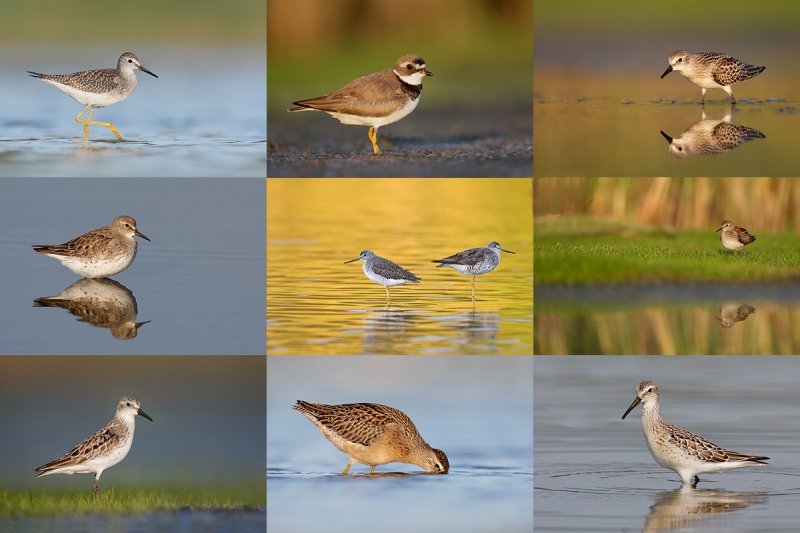

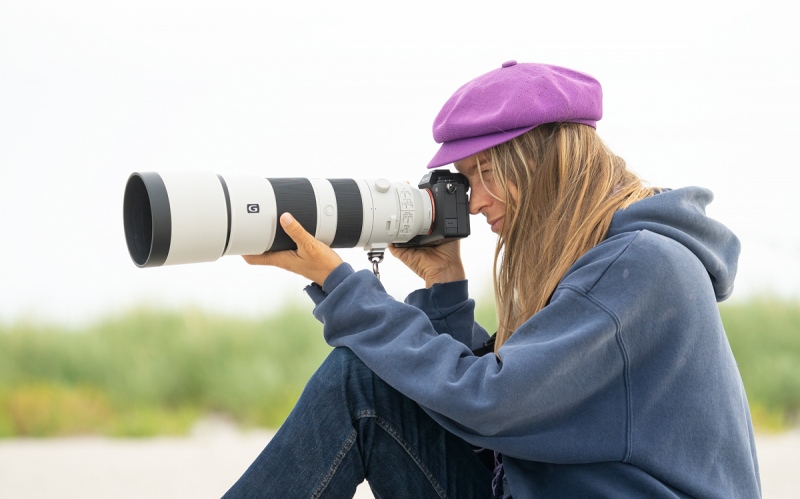
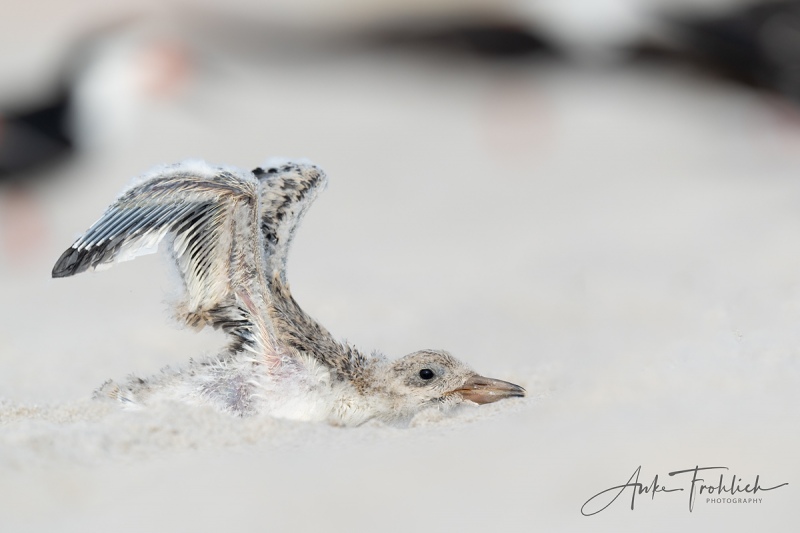
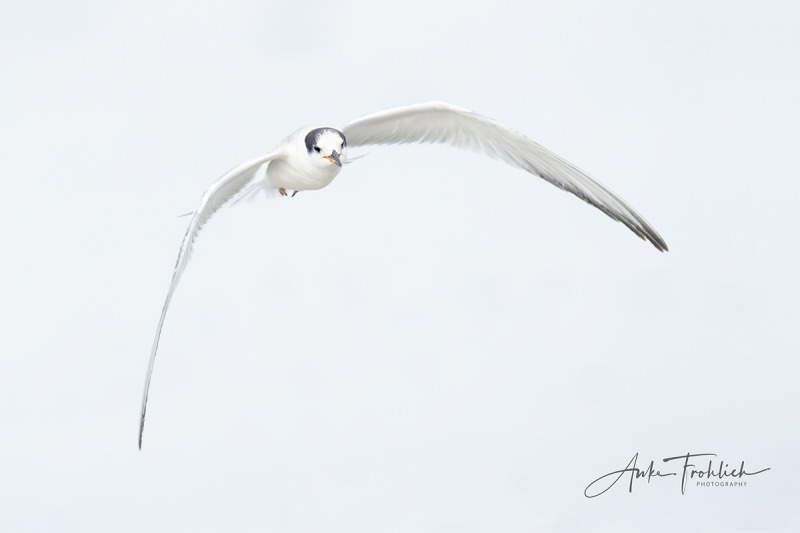
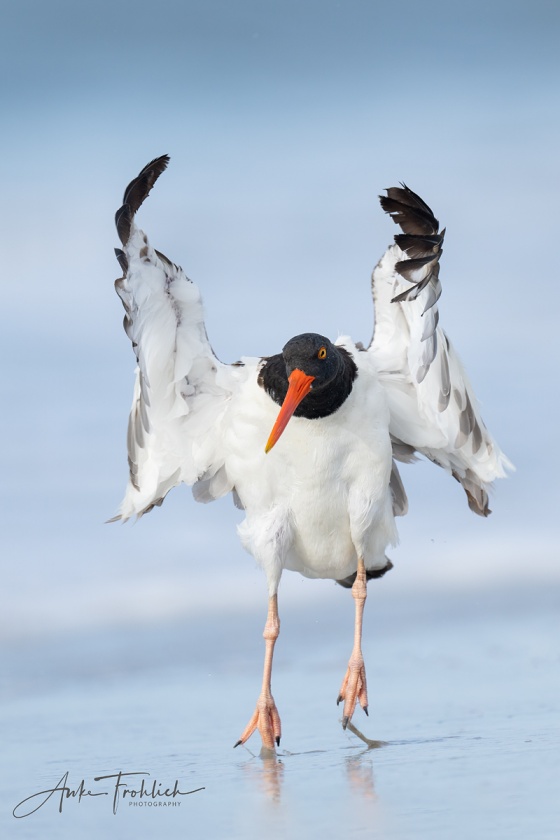
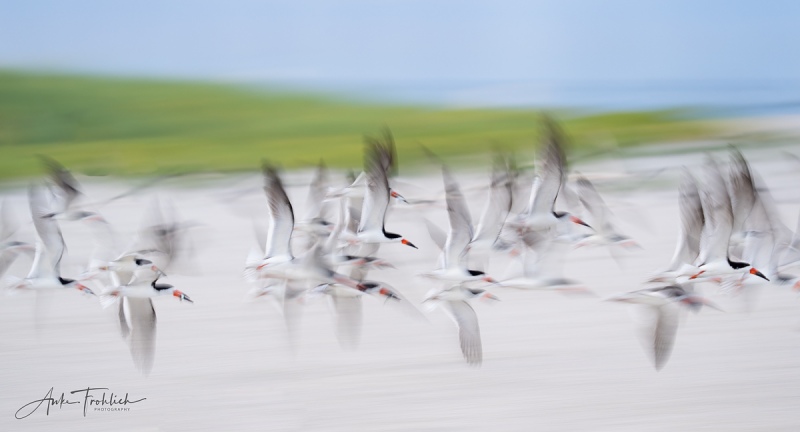
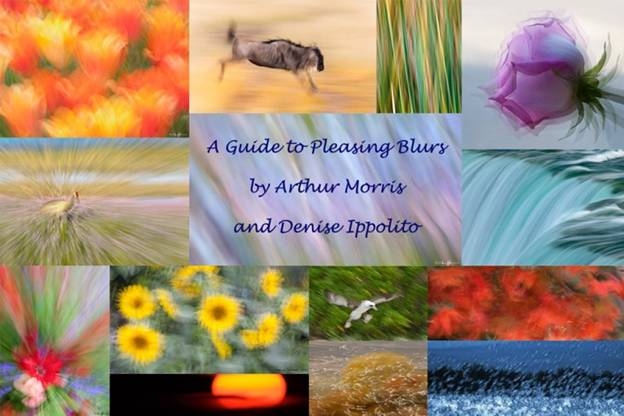













I have your guide to pleasing blurs but have always been hesitant. But after seeing image No.5 – – – –
Good idea,, Neil. Trying to create really good pleasing blurs is like playing the lottery … And as it says in the guide, “The slower the shutter speed, the fewer keepers, and the greater the chance of making something really memorable …
with love, a
The oystercatcher for sure. A nice sharp photo with both the wings and feet showing action.
I’ll take #4. Good composition, great blur, nice colors. Not many images like this!
The Oystercatcher Image is in a league on it’s own; superb photography!
I prefer image #5 by far over the others. You mention “pleasing blurs” on the blog a lot, and this shot nails it!
Image #4 is my favourite, the action and the beautiful background, put this image over the top!
Hi Artie, for me left eye and left knee. All of Anke’s images are well done but I guess I like the blur Image #5 the best.
Thanks, Joe. Like me 🙂
with love, artie
That Oystercatcher image is my favorite. Reminds me of a conductor of a symphony orchestra. The rest of the images are very well done but I keep coming back to that Oystercatcher.
Image 5 by a mile. Superbly executed very pleasing blur.
I also like image 4 also — real cute and funny!!
For me, Image 4. Lots of emotion and character. She captured the moment. You can assign any number of phrases as to what the bird might be saying.